2.3 From the end of the 1700’s to modern times
Referring the reader to the final appendix for analysis of the period between the 1600’s and part of the 1700’s, let us view the more recent and much better-known history of the Tarot, from the end of the 1700’s to today.
We have said that at the end of the XVIII century the Tarot had been assimilated into a game of chance and that their profound significance was no longer recognized. However, in 1781 a bizarre event occurred which, although considered by many only a sham, was rather relevant. This was the year in which the Protestant Pastor Court de Gèbelin, whom we have already mentioned, claimed to have discovered a connection between the game-cards, used for recreational purposes, and ancient Egyptian religion.
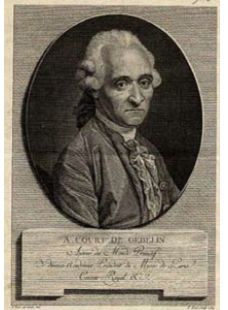
Fig. 7
Court de Gébelin
The words of de Gèbelin, a complex and well-known personage of the French cultural environment, had great resonance in intellectual circles and were not considered fanatical or fantastic. This surprising announcement was, in our opinion, his greatest achievement, as in this way the flagging interest regarding the Tarot was re-awakened, focusing the attention of scholars on the philosophic and esoteric sense of these images and reclaiming them from the exclusively and merely profane use to which they had been relegated as a game of chance.
Consequently, from that time on, the Arcana will be an object of passionate and diversified study, which prepared the terrain, although among deviations and distortions of all sorts, for the comprehension of this new instrument in its progressive development in modern times. After the publication of de Gèbelin’s treatise, we may delineate a conventional subdivision of scholars and occultists of the following decades, into two large Schools: one French, the other Anglo-Saxon, of whom we offer a brief summary.
Between 1783 and 1787, in Amsterdam and Paris, five booklets entitled Manière de se recréer avec un jeu de cartes nommées Tarot ( Ways to amuse oneself with a card game called Tarot ) were published. They contained instructions on the methods of use of the Tarot in cartomancy, and were written by the Frenchman Jean-Baptiste Alliette (1724-1791), otherwise known by the psuedonym Etteilla (Aliette written backwards).
Etteilla became a famous cartomancer but also a cult member of the Pythagoriean Cabala so esteemed that he was invited to participate in the reunion of the Order of the Philatelists, the Masonic Lodge who counted amongst its founders, that same Court de Gèbelin. Apart from any technical consideration, we shall remember simply that Etteilla also regarded the Tarot as a magic text dating back to ancient Egypt, which he. as did de Gèbelin, identified with the legendary Book of Thoth . However, because according to him the figures had been completely altered, he decided to restore their (perhaps presumed) original aspect; and circa 1769 published his own deck entitled Livre de Thot, ou Jeu des 78 Tarots Egyptiens ( Book of Thoth, or Deck of the 78 Egyptian Tarot ).
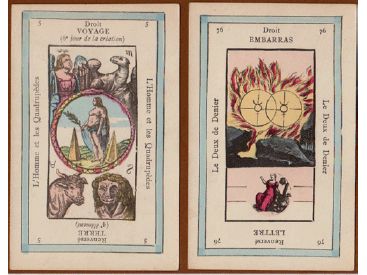
Fig. 8
Jeu des Tarots Egyptiens
(Deck of Egyptian Tarot)
Although the use of cards for divinitory purposes was quite ancient, as we are reminded by authors such as Pico della Mirandola, 26 these times of which we speak are generally accepted as the dawn of modern cartomancy, that is, of an exclusively divinatory use of the Tarot. A more noble interest on the part of esoterists made itself vividly known only after the printing of the book Dogme et Rituel de la Haute Magie ( Dogma and Ritual of High Magic ), published in Paris in 1855 and written by the French esoterists Eliphas Levi, pseudonym of Alphonse Louis Constant.
The interpretation of Levi, although characterized by great intuition, was, briefly: judging the Marseilles Tarot to be exoteric, he redesigned a version, in his opinion esoteric, of certain figures, maintaining only the 22 figures of the Major Arcana to be indispensable. By rejecting the 56 Minoir Arcana, he affirmed with conviction that only the Major had deep significance, to be found through a comparitive study of the 22 letters of the Hebrew alphabet. Basically, in attempting to explain the Tarot through the Cabala, he was responsable for the aforementioned error which caused so many negative repercussions on the modality of research of future generations.
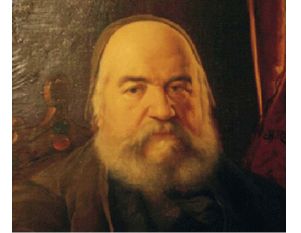
Fig. 9
Eliphas Levi
Some years later, in 1863, another esoterist, Jean-Baptiste Pitois, published the book L’Homme Rouge des Tuileries ( The Red Man of the Tuileries ). Little is known about this individual, better known as Paul Christian. Among the thousand contradictions of his multiform religious inclinations, Pitois may be considered a Hermetic scholar, who, while declaring himself Christian, admitted to being attracted by the ancient mystery religions and the magic arts, “ because magic is not contrary to wisdom, nor to our religious beliefs . 27 ” This first work of his is characterized by a mixture of three divinatory techniques: astrology, onomancy, and the “ 78 Hermetic blades ”, as he himself termed the Tarot. In a later work of his, Histoire de la Magie ( History of Magic ), we find a detailed description of a secret rite which, in a distant epoch, was said to have taken place inside the Sphinx of Ghiza, to conclude inside the Pyramid of Cheope. Here the neophytes came in order to know “The Arcana of Destiny”, which represented a first step towards a more elevated knowledge. In this Egyptian context every Arcanum, according to the description of Christian, assumes a precise denomination and is connected to a rigorous description, which may be interpreted as a keyword 28 . This concept which, not by chance, will be copied and repeated many times, correctly developed and comprehended, is revealed today of capital importance for understanding the true meaning of the Tarot.
In 1886 a young French poet and cabalist, Stanislas De Guaita, published the book Au Seuil du Mystère ( At the Threshold of Mystery ). The object of this work was to liberate occultism of mystification and vulgar, witchlike, spiritistic and divinatory practices which had come to characterize it. His purpose was to show the nobility of High Magic and above all the importance of the Tarot as a synthesis of all initiatic knowledge. Despite the modest commercial success of this work, the text awakened an enormous fascination among many contemporary esoterists, among whom the French physician Gèrard Encausse, known as Papus, and the Swiss hypnotist Oswald Wirth. In 1889 in fact, not long before the turn of the century, another book was printed, Clef absolue de la science occulte: Le Tarot des Bohémiens, le plus ancien livre du monde, à l’usage exclusif des initiés ( Ultimate key to Occult Science: the Tarot of the Gypsies, the oldest book in the world, for exclusive use by initiates ) by Papus.
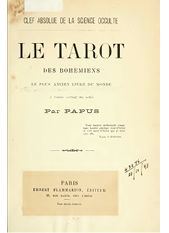
Fig. 10
Clef absolue de la science occulte, Papus
The fundamental aspect of this study consists in the affirmation that the Tarot are an initiatic pastime brought to the West by the gypsies, or Bohemians. This idea, already put forth by de Gèbelin some hundred years earlier, continued circulating and growing in certain circles. Papus affirms that not only were the Tarot at the root of the Ars Magna of Raimondo Lullo (1235-1316), Spanish philosopher, writer and missionary, one of the most famous in the Europe of his time, but that through them it was possible to understand the mysterious ties between God, man and the universe. In spite of the fact that Papus, as did all preceding occultists , allowed himself to re-create his “own” Tarot (specifically, with Egyptian personages illustrating a Hebrew cabalistic framework), he had great merit all the same. Let his writing speak for him:
“ Most modern occultist writers who have dealt with the Tarot manifest great transport regarding the Major Arcana and an equally intense disdain for the Minor Arcana from which were born card games. There are also many false systems of reading Tarot based only upon the 22 Major Arcana, taking into no account the 56 Minor. This is truly infantile. The Tarot is a marvelous whole. 29 ”
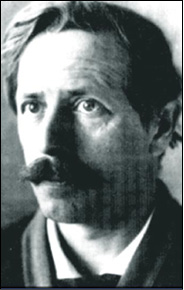
Fig. 11
Oswald Wirth
Dr Encausse, then, differently from Levi, understood a fundamental aspect: the total unity of all 78 images, the 22 Major Arcana and the 56 Minor. This regards another remarkable matter which we will deal with in due tiime. In the 1800-1900’s, another notable representative of the French school was, as already mentioned, Oswald Wirth (1860-1943). Born in German Switzerland, after various sojourns in France and England, in 1884 he affiliated himself with the Great East of France, interesting himself deeply in Masonic symbolism. In 1887 he met De Guaita, who introduced him to the study of the Cabala and the Tarot. Appreciating his artistic capabilities, De Guaita suggested he create a new deck, in order to restore to the cards their “ Hieroglyphic purity ”, as Eliphas Levi himself had hoped at one time.
Taking as example the Marseilles Tarot (specifically a Tarot of Besançon) and an Italian deck, Wirth created a new deck, Les XXII Arcanes du Tarot kabbalistique, restitués à leur pureté hiérogliphique sous les indications de Stanislas De Guaita ( The XXII Arcana of the Cabalistic Tarot, restored to their hieroglyphic purity by indication of Stanislas De Guaita , Paris, 1889). It was dutiful to give credit to the marquis, because, although he left nothing written regarding the Tarot, it is correct to affirm that the Wirth Arcana were an expression of his teachings. Later, in 1926, Wirth, had a new version of the 22 Arcana printed, entitled Le Tarot des imagiers du Moyen Age ( The Tarot of the Illustrators of the Middle Ages ), with eleven inserted tables, destined to have considerable editorial success. These Tarot, much appreciated also by Masonic members, are today a frequent object of study for the many various manuals of cartomancy and archetypical symbolism.
In the 1900’s, another fundamental researcher of the French school, although less known to the public at large, was Joseph Maxwell, who in 1933 wrote a book entitled Le Tarot, le symbole, les arcanes, la divination ( The Tarot, the symbol, the Arcana, the Divination ).
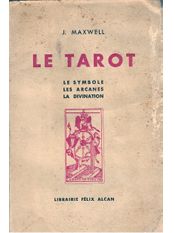
Fig. 12
Le Tarot by Joseph Maxwell
His merits were numerous, the first being that of declaring, “ the Arcana are an optical language and constitute a book written in symbols ”. This may appear a secondary affirmation, but it is one of the ultimate keys to understanding the Tarot. After some two centuries of hypotheses and suggestions, someone again began to speak of this matter in a completely new way, favoring the aspects of empirical observation with respect to the the complicated and almost always abstruse occult theories. This is not, however, the only merit of Maxwell who, in fact,was the first to indicate a disposition of the cards (already studied in the XIX century) according to a triple septenary (3x7), with the Fool, numberless, considered apart. “ The Fool has no number (...) is therefore outside of the triple septenary numbered from I to XXI; it is, then, outside the Universe of the 3x7. 30 ”
Although we will consider this last aspect more in detail later, we may affirm even now that Maxwell was overall a fundamental researcher of the history of the Tarot; and seeing that some individuals of our age have appropriated certain of his more notable intuitions, passing them off as their own, we consider it essential to render justice to his thinking and his worthy goals. In the wake of this scholar the French school began a progressive decline and we would not pause longer were it not for an author who had a great, unfortunately negative,impact on the development and use of the Tarot for a good part of the 1900’s: we refer to the Basque, naturalized French, Paul Marteau. This individual, in the book Le Tarot de Marseille ( The Marseilles Tarot ), analyzed a Marsaillese deck, which he considered the first true esoteric model, explaining its symbolism, features, numbers and colors, following the presumed criteria of Western magic. His principal fault was in considering this deck, now much known to the general public as the Ancient Marseilles Tarot , to be the ancient deck of Marseilles Tarot which, lost over the centuries, had been rediscovered by him. Recent comparitive studies have demonstrated that it was a deplorable fake. The features and drawings of these cards, are in fact exact reproductions of the Besançon Tarot, published by the editor Grimaud in 1898, who merely reproduced other, former, Besançon Tarot published by Lequart and signed “Arnault 1748. 31 ” Furthurmore, as if this plagiarism were not enough, Marteau also took the liberty of modifying certain details of the original, and conserved only the four basic colors imposed by the typography machines which, in the course of the industrial revolution, had forced printers to modify their methods of the coloration of playing cards. In substance, instead of respecting the more diversified ancient colors of hand-copied cards in re-creating these Tarot, he used only only the 4 colors of a Convers deck published by the editor Camoin in 1880: red, blue, yellow, and very little green. His deck, during the 1900’s, was the source of hundreds of interpretations regarding the symbols, illustrations and colors of these supposedly “authentic” Marseilles Tarot, inspiring generations of aficionados and researchers, totally unknowing of the fact that they were basing their interpretations on a banal and mediocre copy, a result of technical and commercial machinations. It is easy to understand that this episode contributed heavily towards to the increase of an already widespread lack of knowledge regarding the Tarot. In fact, if a large number of scholars and cartomacers were “formed” by, or yet still practice with and study on these cards and their presumed meanings, how may we give credit, even in good faith, to their technical preparation?
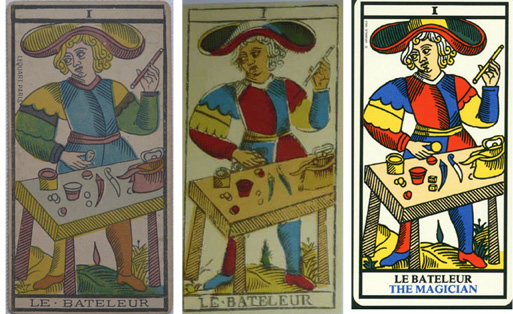
Fig. 13
Lequart Arnoult Edition 1748
Fig. 14
Conver Edition 1880
Fig. 15
Ancient Marseilles Tarot - Paul Marteau
In most other European countries, no great effort was made towards a fuller understanding of the Tarot. At least, we can find no figures of equal fame prestige founded or unfounded (and that itself is another matter) as in the French school, as it was called. The only other society to evince a deep interest in the subject, and continues to do so today, is the Anglo-Saxon.
The pioneer of this current of thought, Kenneth Mackenzie, was an English Mason, member of the Societas Rosicruciana in Anglia (SRIA). Thanks to a letter written in 1887 to his friend and brother Mason Francis G. Irwin, regarding instructions received from Eliphas Levi “ for working with the Tarot ”, we know that he associated with Eliphas Levi in 1861, during the French occultist’s second trip to England. In another letter in 1879, this time to Dr William W. Westcott, also a member of the SRIA, he wrote that he did not wish to communicate his “ Tarot system ” indiscriminately because “ it might become a dangerous weapon in the hands of persons less scrupulous than myself. 32 ”
From his writings we learn that he collected numerous notes on the Tarot and planned a work, never published, entitled The Game of Tarot, Archaeologically and Symbolically Considered , containing 78 illustrations. Although it was never published, we know that Mackenzie showed the project of the work, “ as a curiosity ”, to Brother Mathers. It is precisely with this last eccentric personage that the history of the study of the Arcana in the Anglo-Saxon world really began.
In 1888 Samuel Liddel Mathers published the first English volume dealing with the Tarot, a simple small manual of cartomancy, entitled Fortune-telling Cards. The Tarots, Its Occult Significance and Method of Play. The information was taken from de Gèbelin and from the deck The Great Etteilla by Julia Orsini, reworked with various notes gathered from Levi and legends of Egyptian initiatic ceremonies narrated by Pitois. Here are some of Mathers’ affirmations in appendix to the booklet:
“ This is the hieroglyphic alphabet which Moses made the great secret of his Cabala (…) it is the famous Book of Thoth (…), preserved until the present epoch in the form of that particular deck of cards called Tarot (…) .”
These very decided affirmations of Mathers give only an idea of his opinion regarding the Tarot. His thoughts, in effect, will emerge only following the foundation of a new esoteric organization, the Hermetic Order of the Golden Dawn. For the members of this institution, which gathered many adepts (including the Irish poet William Butler Yeats) in the UK, in France, and later, in the United States, the Tarot had a fundamental role.
The Golden Dawn gathered, in fact, numerous manuscripts, the so-called Flying Rolls , composed by various acolytes and put at the disposition of the other members for the learning of the diverse occult and magic disciplines. Among these rolls, which actually constituted a course of esoteric studies, there was one of particular interest to us, the so-called Liber T , a treatise attributed almost certainly only to Mathers.
This volume, which already in its title refers to the ancient Egyptian manuscript so often cited by the occultists of centuries past, was a crucial text of which the initiates of the Order were required to know all the secret attributes, theoretical and practical. Among the various scholars, we will mention two who had a more than substantial role in the XIX century history of the Tarot: Aleister Crowley and Arthur Edward Waite.
The first, an unusual individual, according many depraved, for others a black wizard, defined himself “ the most sublime mystic in history, the Word of a new Eon, the Beast, the 666 Man, the self-crowned king that men must adore and curse. ”
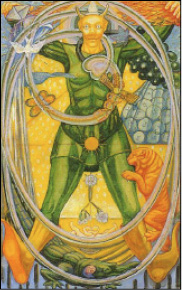
Fig. 16
The Fool - Alister Crowley
His name, after his death in 1947, was forgotten for a long time, to be rediscovered at the end of the seventies by the hippy generation and raised to the status of prophet of a new era based on free love... It is not our intention to dwell upon his fantastical life and on his more than original and not always shareable thoughts, because that which interests us is only his role in the history of the Tarot. Crowley, in 1907, after a series of vicissitudes and personal tragedies, founded the Argentum Astrum, a magic brotherhood which he intended to replace the aforementioned Golden Dawn. In 1912, he published the first volume of The Equinox of the Gods , a magazine divulgating instructions for his disciples, in which he furnished a detailed description of the 78 Arcana. Actually, it was not an original study of his, but a plaigiarism of the Liber T of Mathers, of which we wrote above.
Around 1935, the painter Frieda Harris, wife of a Member of Parliament, entered the organization. The meeting with the artist permitted Crowley to realize a long-time dream of his: the two together created the illustrations of The Book of Thoth Tarot , published for the first time in London in 1944 in a black and white version, which was reprinted in the 70’s in the graphic colour version more familiar today.
In this manner, the interest for the Tarot migrated from England to the United States, thanks to the Golden Dawn and its two best-known affiliates, Aleister Crowley and Arthur Waite. This last is remembered above all for the Rider-Waite Tarot , the work that gave him lasting fame. A few of his affirmations:
“ The Tarot incarnates the symbolic representation of universal ideas (…), and it is in this sense that it contains a Secret Doctrine (…) handed down from one of the chosen to another and which is vouched for by mysterious literature such as that of Alchemy and Cabala; it is inherent also in certain mysterious Institutions of which the Rosacrucians are an example near to us, and of which the Masonic Guild is a living example. (…) I do not mean to suggest that the Tarot is the figured expression of the secret doctrine, nor that it was followed by the Hermetic philosophers; but it is notable in that it is the first expression of this art. 33 ”
“ There is an explanation of the Major Triumphs through that combination of the figures which belongs to the highest order of Spiritual Truth; it is not occult but mystic; it is not possible to communicate it because it lies inside its own Sanctuary.(…) If we attempt individually to define the highest meanings conceivable in a state of meditation, then combine the message , modifying their formulations until the entire series is led to harmony, the result may be something absolutely valid in itself, and therefore true. We are speaking especially of the Major Triumphs. In conclusion, we must understand that we are simply working with painted figures; but the modality of the mystical goes beyond figured mental portrayals: it is behind the kaleidoscope of external things that the Silent Light may rise inside the mind, in that state of purity that is the Life of the Soul in God. 34 ”
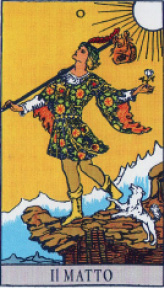
Fig. 17
The Fool, Rider-Waite Tarot
From these writings, we may appreciate the greatness of the scholar, fully aware of a mystical function of the Tarot, but unfortunately, of his deck, the aforementioned Rider-Waite Tarot, we cannot say the same.
It is, in fact, a deck lacking a real objective esoteric component, and which barely conserves, as do all of the decks described up to now, only vague symbolic traces confirming the basic Coded Structure . This lapidary statement will be motivated in detail.
In concluding this research of ours, which does not claim to treat fully all of the events of the complex history of these images, we will merely mention that regarding approximately the last two centuries, attention has been concentrated only upon the two principal currents of study and the accent has been exclusively on the occult and esoterical aspects of the Tarot. This is not meant to imply that there have not been other researchers of note, dedicated to other branches, nor that the approach to the Tarot has always been of an exclusively esoteric sort.
Regarding the first consideration, we might cite, among thousands of scholars, several names quite famous in Western culture, such as Peter D. Ouspensky, who wrote extensively of the Tarot in the volumes A New Model for the Universe and The Symbolism of the Tarot and Helena Petrovna Blavatsky, who mentioned them frequently in her Secret Doctrine . Concerning instead other sorts of approaches, such as the artistic, we prefer to refer the reader to publications specialized in the subject. Our point of view, in fact, which considers the cards Iconic bearers of Wisdom, would be unable to describe the manner in which this modality of orientation, thanks to its infinite and various nuances, may have contributed to enrich in general, but under other perspectives, the subject of Tarot.